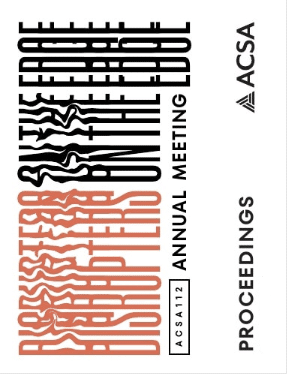Author(s): Mili Kyropoulou
In the evolving landscape of architectural education, the imperative to cultivate sustainable design competence has become increasingly prominent. While the term “sustainability” has become ubiquitous in design studio briefs, there remains a significant gap in providing students with clear definitions and the means to integrate sustainable principles into their design projects successfully. To effectively address this issue in architectural education, it is essential to develop methodologies that are adaptive to the changing climatic challenges and rapid technological advancements, all while effectively navigating the persistent perceived dichotomies that dominate architectural education and the profession, such as the discourse between creativity and technicality or analytical and synthetical minds. Architectural programs are positioned to respond to these challenges and bridge the divides by persisting in the deep learning of fundamental principles and theories and by creatively incorporating sustainable environmental design into traditional design studios. This paper explores the current state of sustainable environmental design within architectural education and underscores the vital need to equip students effectively with the necessary tools and methods to integrate sustainability into their designs consciously and meaningfully. It discusses two modules that emerged from the restructuring and testing of the environmental technology sequence within the curriculum of a graduate architecture program. One focuses on studying existing buildings through a structured post-occupancy evaluation project, leveraging historical contexts, and the other is centered on integrating computational simulation tools into the design process, harnessing contemporary technologies. Both modules emphasize immersive, experiential learning, nurturing process-based mindsets that promote flexibility and adaptability to the rapid changes the architectural profession faces, and empowering students with analytical skills to navigate the complexities of sustainable design. Students are encouraged to cultivate critical thinking skills and embrace interdisciplinary perspectives by employing active learning strategies, emphasizing learning-by- doing approaches, and promoting student-led initiatives, ultimately prioritizing design processes over singular outcomes.
https://doi.org/10.35483/ACSA.AM.112.66
Volume Editors
Germane Barnes & Blair Satterfield
ISBN
978-1-944214-45-6

 Study Architecture
Study Architecture  ProPEL
ProPEL 
